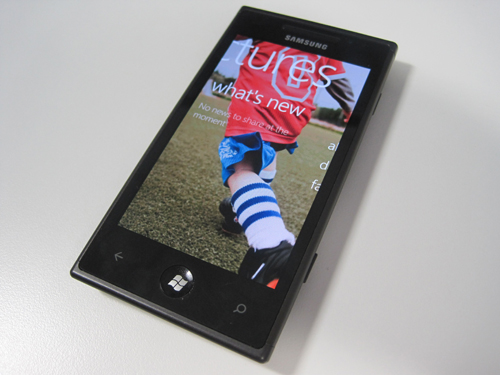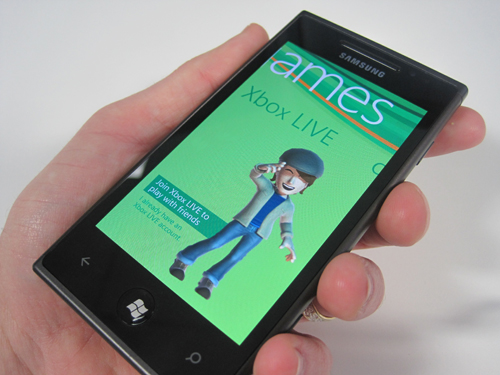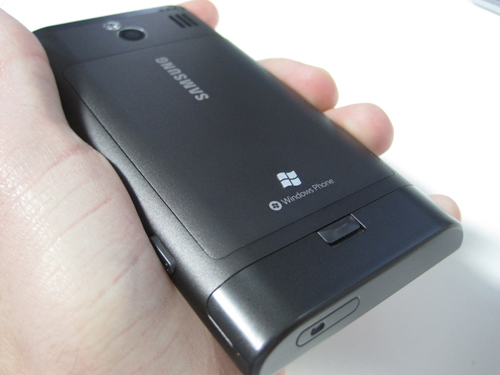
As you’ll no doubt have noticed from our comprehensive HTC HD7 review, we’re rather taken with Microsoft’s reborn mobile OS.
While it’s clearly not the finished article just yet (copy and paste, we’re looking at you), it certainly represents an encouraging start, and is the perfect foundation for Microsoft to rebuild its battered pride in the smartphone arena.
However, as with Google’s Android platform, one device doesn't necessarily show the entire picture. Windows Phone is being licensed to several major manufacturers, with HTC being just one of a merry band of day-one supporters that includes Dell, LG, and – naturally – Samsung.
The Korean firm has been keen to spread its chips across the table when it comes to choosing which OS to support. Its Android-powered Galaxy S has been an incredible success, yet it continues to forge its own destiny with its proprietary OS bada, as seen on the Samsung Wave.
It was almost a given that this promiscuous electronics giant would support Windows Phone – heck, if Apple chose to licence out its iOS, we would be willing to put money on Samsung being at the front of the queue.
 A grand entrance
A grand entrance
As the first indication of Samsung’s intentions towards Windows Phone, the Omnia 7 is certainly a striking statement. In purely physical terms, it looks and feels massive. Despite being a tad smaller than the 4.3-inch monster seen on the HD7, the 4-inch Super AMOLED screen dominates the front of the device and is the exact same display which has dazzled on the aforementioned Galaxy S.
The brightness, colour depth, and clarity of this screen simply cannot be translated into mere words: it has to be seen to be believed, and is one of the main reasons that the Omina 7 makes such a jaw-dropping impression. It quite simply leaves its LCD-based rivals in the shade, and that includes the HD7.
However, while the Omnia 7 most definitely has the looks to turn heads, in practical terms it’s somewhat less convincing. The sharp, pointed corners of the phone make gripping it uncomfortable, and also make it difficult to reach the upper portions of the screen with your thumb.
In this respect, Samsung would have been wise to learn from its previous designs - the Galaxy S has rounded corners which allow the phone to sit quite nicely in your palm.
The Omnia’s edges also cause problems when the device is in your pocket. If you’re the kind of person who wears jeans tight enough to put the average indie rock band to shame then expect an unpleasant jabbing sensation every time you sit down.
 Power mad
Power mad
There’s another major issue with the Omnia 7’s design, but this one should never have gotten off the drawing board. The phone’s power button is located on the side of the device, mirroring the location of the dedicated camera key. Although this allows you to effortlessly lock the device when you’re holding it, it also results in unwelcome and unintended power-downs. We found that several times the Omnia 7 would switch off when it was in our pockets – and we weren’t even wearing our Tom Jones-style tight leather pants at the time, either.
Thankfully, once you’re past these nigglesome points the Omnia 7’s hardware does nothing but please. Although the phone has a large footprint, it’s disarmingly thin. The back of the handset boasts a classy ‘carbon’ finish which prevents it from slipping out of your hands at inopportune moments, as the iPhone 3G was want to do.
The Omnia 7 packs a 5-megapixel camera with flash and 720p video recording. While there are phones out there with more robust megapixel counts, you’re unlikely to be dissatisfied with the photographic performance of Samsung’s phone. It captures excellent shots and records vibrant video.

Smooth as silk
The same silky-smooth user interface that we swooned over in the HTC HD7 is present here, and the Omnia 7’s highly responsive capacitive touchscreen makes navigating through the various menus an absolute, unmitigated pleasure.
It’s at this point that the superior screen really shines: images look fantastic, and browsing the web is an utter joy. We’re also pleased to note that web pages load in lightning fast time, putting to shame the performance of the stock web browser on our 2.2-powered Google Nexus One.
The always-live home screen continues to impress, as does the formidable double-act of the ‘Places’ and ‘People’ tiles. Finding the perfect middle-ground between Apple’s largely static OS and Google’s widget-heavy interface, Windows Phone is one of the most expertly-constructed mobile UIs we’ve yet experienced. It offers perfectly-pitched functionality that allows you to interact with your friends and family, comment on news posts, and attend to your daily schedule with almost clinical precision – and during this dervish of activity, it never stutters or pauses - a shortcoming that Android is often very guilty of.
Tight integration with Microsoft’s Zune and Xbox Live services is also present. Although in the case of the latter it’s very early days at the moment, the way in which Windows Phone links you with your music is like a breath of fresh air after years of painfully dancing to iTunes’s often humiliating tune.
.jpg) Early days
Early days
When considering the shortcomings of the Omnia 7, it’s worth remembering the issues that surrounded the launches of the first iPhone and T-Mobile’s G1, the debut Android handset. When you realise how much both of those platforms have evolved since their inceptions, it makes Microsoft’s mobile OS an even more tantalising proposition: what we have here is very nearly a match for the best the competition has to offer, and once a few updates have been rolled out of the gate (‘cut and paste’ is due in early 2011, in case its omission was worrying you unduly) then we could be looking at a new champion in terms of user satisfaction, if not actual sales.
But that's the future. In the present, Windows Phone has two incredible handsets to its credit. When placed side-by-side, we have to admit that the HD7’s larger screen overshadows the Omnia 7 somewhat, and the power button placement on Samsung’s device is almost unfathomable. Still, these points can't detract from the fact that the Omnia 7 is an excellent piece of technology, and prospective Windows Phone customers could have a difficult decision to make this Christmas when it comes to picking their device.
Samsung I8700 Omnia 7

